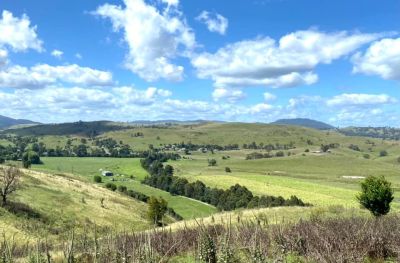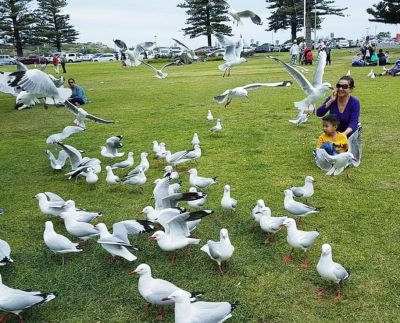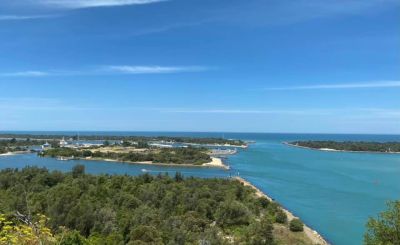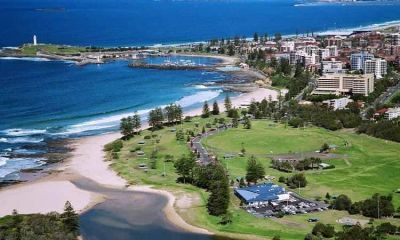VBooking - Travel Agent, Book tours, stays Australia
-
Daily tour
Spring Flower Viewing
New 111 USD -
Daily tour
The Jade Buddha Temple in Bendigo and flowers
New 84 USD -
Daily tour
Around Port Phillip Bay - Dolphin Watching
New 125 USD -
Daily tour
Ballarat VIP
New 84 USD -
Daily tour
Skiing at Mt.Buller
New 104 USD 91 USD
-
Daily tour
Autumn Leaves at Mayfield
New 136 USD 132 USD -
Daily tour
Nelson Bay – Camel Riding & Dolphin Watching
New 132 USD -
Daily tour
Skiing at Perisher
New 187 USD -
Daily tour
Canberra Snowy Forest
New 153 USD -
Daily tour
Blue Mountains – An Experience Above the Clouds
New 132 USD -
Daily tour
Wollongong - Nan Tien Temple
New 132 USD -
Daily tour
Canberra - The Heart of Australia
New 139 USD 132 USD -
Daily tour
Sydney city tour
New 111 USD 104 USD
-
Daily tour
Cherry Farm and Flowers
New 77 USD -
Daily tour
Great Ocean Road and the Twelve Apostles
New 97 USD -
Daily tour
Phillip Island VIP Tour - Seal Kingdom
New 111 USD -
Daily tour
Mornington Peninsula
New 160 USD -
Daily tour
Lake Mountain Snowy mountain
New 87 USD -
Daily tour
Fishing and Lotus Viewing Experience
New 91 USD -
Daily tour
Bright Autumn Leaves
New 111 USD 104 USD -
Daily tour
Phillip Island VIP tour
New 111 USD 104 USD -
Daily tour
Yarra Valley Farm and Puffing Billy Steam Train
New 87 USD 80 USD
-
Multi day tour
Lake Entrance - Crabbing and Prawning
New 347 USD 312 USD -
Multi day tour
Hot Air Balloon - Snowy Forest Canberra 2 days
New 243 USD -
Multi day tour
Adelaide road trip - 4 days 3 nights
New 797 USD 762 USD -
Multi day tour
Sydney road trip - 7 days 6 nights
New 1,385 USD -
Multi day tour
Melbourne 5 days 4 nights
New 451 USD -
Multi day tour
Sydney tour - 5 days 4 nights
New 970 USD -
Multi day tour
Skiing at Mount Hotham
New 201 USD
Australia, spanning over 7.7 million km², has many beautiful and world-famous scenic spots. Let's explore Australia with VBooking!
-
![TUNNING AUTUMN – CHASE THE GOLDEN & RED LEAVES WITH VBOOKING]()
TUNNING AUTUMN – CHASE THE GOLDEN & RED LEAVES WITH VBOOKING
Australia’s autumn is breathtaking! The streets are covered with vibrant red, golden, and orange maple leaves, creating a dreamy backdrop for your trip.
-
![Summer Autumn Promotion]()
Summer Autumn Promotion
Autumn is the most beautiful season to visit Australia, with breathtaking golden and red foliage. Big promotions to celebrate the arrival of autumn!
-
![Lakes Entrance and Royal Cave]()
Lakes Entrance and Royal Cave
Located about 300 km northeast of Melbourne, Lakes Entrance offers a wealth of fascinating experiences. One particularly impressive destination is Royal Cave, one of three caves in Royal Park—an expansive primeval forest featuring Carnaval Park, appealing...
-
![Buller snow Mountain]()
Buller snow Mountain
Located nearly 300 km from Melbourne, Buller Mountain is a large and beautiful snow mountain, making it an attractive destination in winter. From the parking lot, a bus transports visitors up the mountain. There, you will find various slopes where familie...
-
![Discover Adelaide part 2]()
Discover Adelaide part 2
Located about 14 km from the city center, Port Adelaide is renowned for its museums, restaurants, and heritage buildings that reflect the early prosperity of Adelaide. In this coastal area, you have the chance to see dolphins up close and visit museums wi...
-
![Lake Entrance Trip]()
Lake Entrance Trip
Located approximately 300km from Melbourne, the towns of Lakes Entrance and Kalimna in Bairnsdale, East Gippsland are fantastic destinations.
-
![Wollongong]()
Wollongong
The beautiful coastal city is located in the Illawarra region, 82 km south of Sydney. With a population of about 200,000, it is the third largest city in New South Wales (after Sydney and Newcastle) and the ninth largest in Australia. Wollongong is renown...
-
![Ballarat and Lake Wendouree]()
Ballarat and Lake Wendouree
Ballarat nổi tiếng với dấu ấn của khu mỏ vàng xưa, nên ở cửa ngõ TP. có tượng người thợ đào vàng với chiếc cuốc trên vai và con chó đứng bên. Trở lại Ballarat lần này, tôi có thêm trải nghiệm thú vị.Trung tâm TP. Ballarat đường phố rộng đẹp, những dãy nhà...
VBooking is wonderful
VBooking is wonderful
Let's explore some testimonials from our satisfied customers with VBooking.

Mrs ISABELLA -Adelaide
It was wonderful for our vacation! The house was clean, spacious, and just as beautiful as in the advertisement. There were some visible signs of general wear and tear, but none of these affected our comfortable stay. The kitchen was well-equipped with utensils, from chopsticks to pots and pans, cups and glasses - especially the bottle of Rose wine that Hao prepared! The entire experience was fantastic and I will definitely return :)

Mrs LI LY from Sài Gòn
Two weeks in Melbourne was a wonderful experience. I visited many unique places that I didn't see on the itineraries of other travel companies. I explored life in Melbourne as a potential future home for my family. I love photography, and Tony took many excellent photos. Melbourne has many more beautiful sights, and I look forward to booking with VBooking again to discover even more. See you in the next time!

Mr Ho and his son Moore
Taking the whole family to explore Australia was a very exciting experience, especially since VietBooking arranged the trip according to our family’s preferences. My children loved cuddling the gentle, adorable kangaroos and feeding them by hand. My favorite part was crabbing and shrimp fishing—extremely rare experiences that I and many others cannot find in my country. VietBooking was very enthusiastic and accommodating in organizing the perfect tour







































